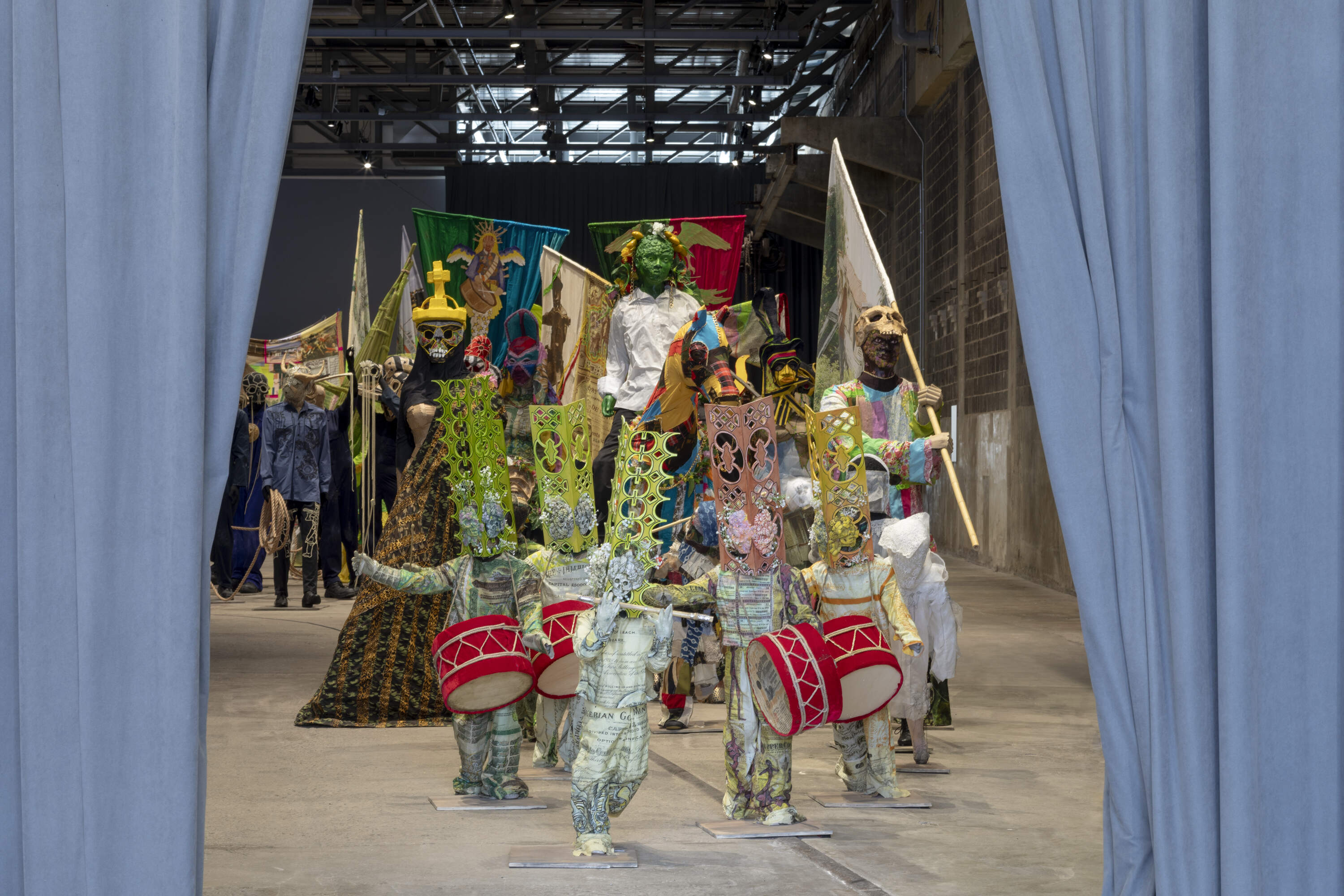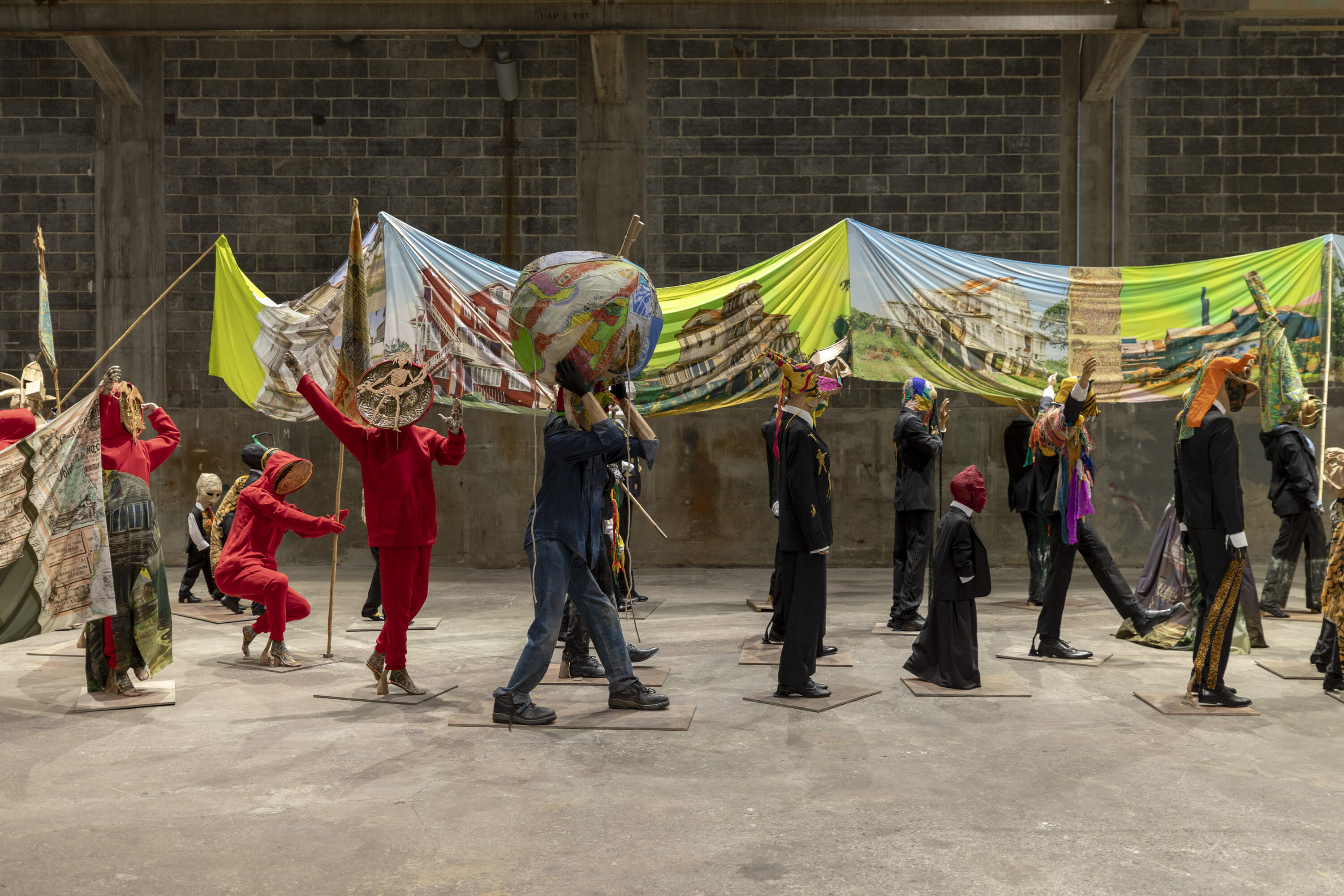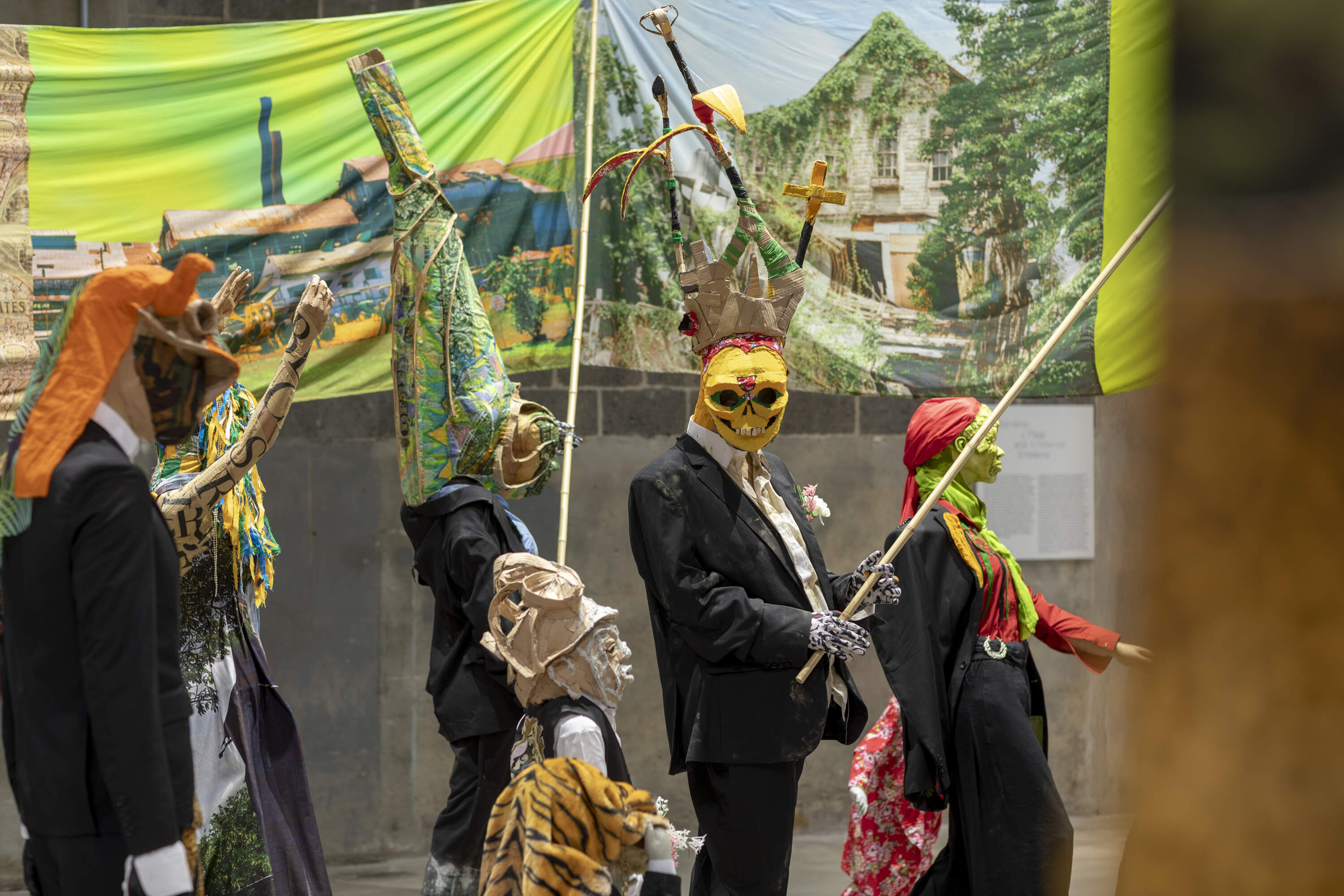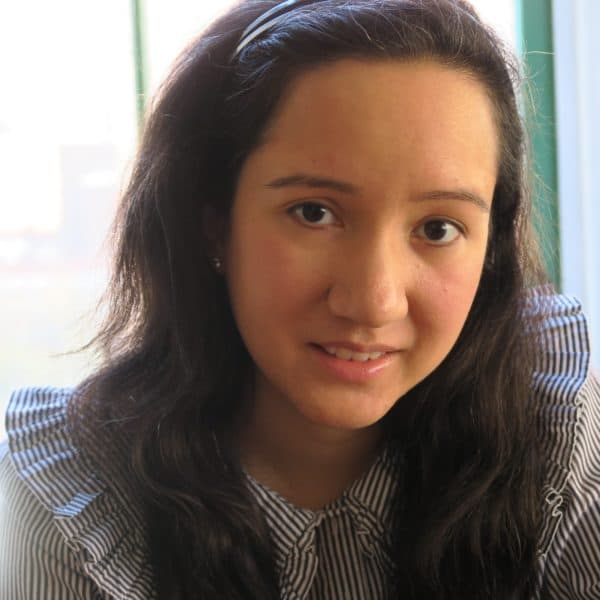Advertisement
'The Procession' at the ICA Watershed is a spectacle of form and color

The industrial warehouse space of the Institute of Contemporary Art’s Watershed, nestled among the boats of East Boston’s shipyard, has morphed into the home for an unexpected gathering of spirits.
Enter the cavernous hall, and visitors are immediately arrested by a brightly colored but vaguely eerie world of mannequins. The 140 figures are constructed from cardboard, wood, and recyclable plastic, clothed in textiles. The domain is theirs, a place of celebration and exuberance, but also one where the figures carry an underlying haunting. The spectacle, festive and full of revelry, is British-Guyanese artist Hew Locke’s exhibit “The Procession.”
A cluster of child-like musicians clasping red drums lead the march, followed by militaristic soldiers, proudly seated on horseback, hair adorned with hanging flowers. Further down, towering forms on stilts appear, while others bear flags and banners, gesturing towards political liberation and independence.

Given the name of the installation, the theatrical pageant implies movement, and yet the whole community Locke has imagined is frozen. The effect is that of a carnival that is both lifeless and yet energized, infused with humanity. Amidst a rainbow of colors, many of the figures wear masks, some decorated with horns or strands of beads, several grinning at viewers passing by.
The work portrays individuals who are all living with the consequences of the past, as seen through symbols including medals from the Anglo-Afghan Wars and the East African campaign. They are shaped by experiences, while simultaneously subverting them.
“I find the arc of history completely fascinating,” Locke said. “History rolls on. We sometimes can’t see what’s around the next corner. If there’s a historical or current issue, I try to look at its roots. In other words, how did we get here?”

The exhibit was originally commissioned by the Tate Britain, and its arrival at the ICA Watershed marks its debut in the United States. Drawing heavily from Locke’s upbringing in Guyana and experiences abroad, the show speaks to patterns of migration and the impact of colonialism. Guyana was occupied by the Dutch in 1616 and became a site of slavery, filled with plantations. Later falling into French hands and then unified by the British in 1831, Guyana has a history of subjugation. The joyful, bedazzling exuberance that Locke’s figures exude may gesture towards the independence that the country realized in 1966. The parade seems to be advancing forward in ritualistic unity, reminiscent of a migration, and it may be that the mannequins are moving towards freedom.
Born in Edinburgh, Scotland, Locke was raised in British Guyana, the son of a Black and Guyanese artist, Donald Locke, and a British artist, Leila Locke. When the family immigrated to Guyana in 1966, the country was reaching independence. His pieces frequently deal with languages of power, cultural identity, and temporality. Other works that he has created include “Gilt,” unveiled as the Facade Commission for The Metropolitan Museum of Art and the public sculpture “The Jurors,” installed at the ancient meadow at Runnymede to mark the 800th anniversary of the Magna Carta’s signing.
Advertisement

The beauty of “The Procession’s” masquerade conceals what may be the impact of colonial rule’s violence, and yet the figures, invested with presence, emanate a sense of defiance. The struggle for independence calls for a narrative where systems of control are toppled or turned upside down. The sculptures, representing a reversal of traditional dynamics, evoke an upheaval of history, of the royal legacies that formerly ruled through economic, political, and militaristic channels.
Perhaps one of the most striking features of “The Procession” are the masks that many of the mannequins wear. Throughout history, masks have been fabricated as part of social critique, using parody as a way of subverting authority. Sometimes, masquerades satirize the roles that we play in society, indicating fluid or transformative aspects of identity, allowing for shifts in personas. In Locke’s exhibit, we’re led to question, what is more real, the actual face that we never see, or the appearance one assumes? In this context, social orders are overturned, while the masks seem to poke fun at roles one might previously have assumed.
Locke described a sense of light that comes through one’s experience of “The Procession,” despite the burdens that the figures carry with them. Engaging with the exhibit, a spectator is almost invited to march alongside these characters.
“When the piece was first launched, I walked down it, and I was looking at the figures. Then I turned around and walked back up the way,” Locke said. “Now, I’ve joined the procession. I’m looking at the back of the figures’ heads and walking with them, and I don’t know where we’re going. But, I’m optimistic, despite everything. Without optimism, where are we?”
“The Procession” is on display at the ICA Watershed until September 2.
